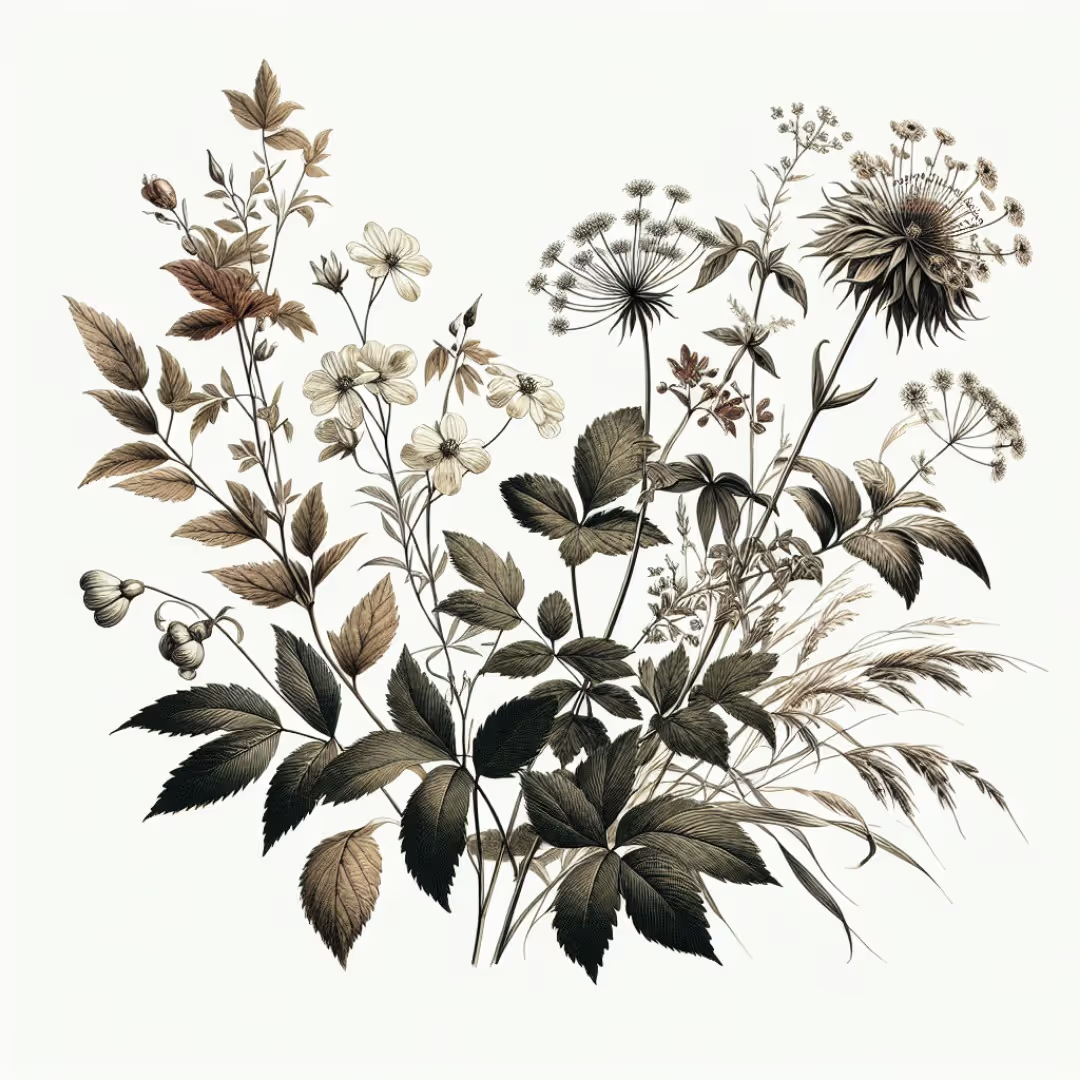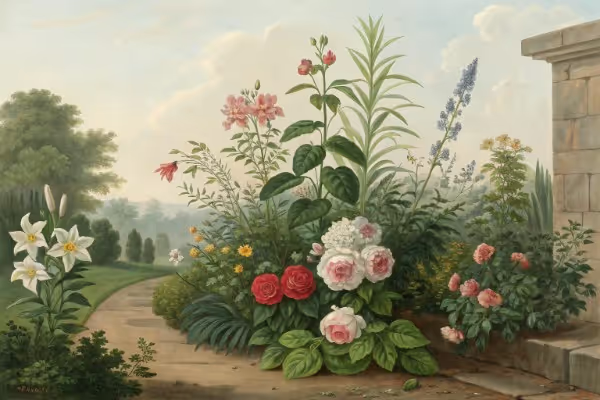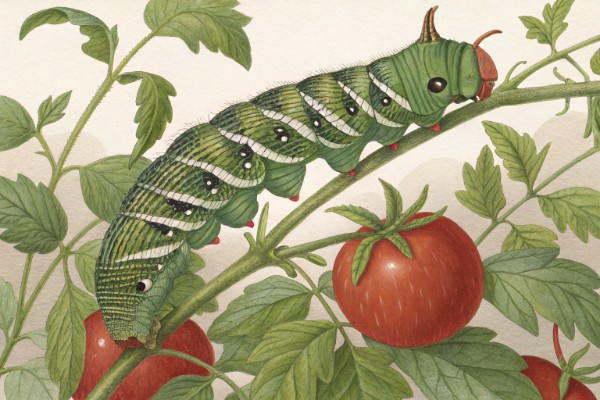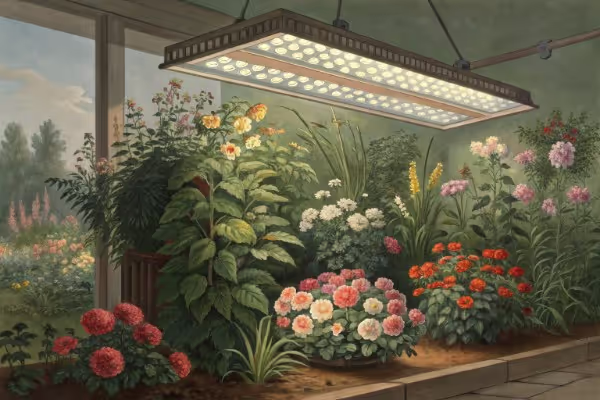What to Plant in November for a Productive Winter Garden

What to plant in November
Wondering what to plant in November? Sow hardy greens like kale and mustard now for steady winter harvests. Garlic cloves sink into cool soil this month, setting the stage for robust bulbs next summer. November planting offers gardeners an opportunity to extend the growing season—read on to discover more crops that thrive in late autumn frost.
Cheatsheet: Plant for a Thriving Winter Harvest
🥬 Best Crops for Cold Soils
- Spinach: germinates at 35°F/1.6°C
- Kale: sweeter after frost
- Garlic: plant cloves, harvest late spring
- Onion sets: roots now, bulbs by summer
- Fava beans: fix nitrogen, sprout at 40°F/4°C
- Swiss chard: cut-and-come-again
- Broad beans: hardy up to zone 6
- Peas: soak seeds, overwinter in mild zones
- Winter lettuce: ‘Arctic King’ or similar
- Mustard greens: rapid leaf growth
🌱 Key Planting Steps
- Prepare beds: clear debris, add 2 in/5 cm compost
- Sow seeds or transplants: follow seed depth & spacing
- Mulch: layer 2-4 in/5-10 cm straw or leaves
- Cover: cold frames or fabric if below 25°F/-4°C
- Water: keep soil just moist, less frequent
🔧 Tools and Products You’ll Need
- Hand trowel
- Garden rake
- Row cover or cloche
- Seed trays (for starts)
- Rich compost
- Straw mulch or leaf mold
- High-quality seeds or sets
🍃 Self-Sufficiency & Nutrition Payoff
Winter greens pack 100%+ daily vitamin K per serving. Homegrown alliums boost immunity. Root crops store for months, enabling food security. One 4x8 ft (1.2x2.4 m) bed yields salads and stews until spring.
🌡️ Fast Facts
- Cold-hardy veggies tolerate down to 20°F (-7°C)
- Soil stays workable with mulch even in frost
- 44% of home gardeners grow spring onions after fall planting
What to plant in November: smart choices by climate
I plan November sowings by frost pattern, soil temp, and daylength. The goal is simple: establish plants that will hold, then surge in late winter.
Cold winter zones 3 to 6
- Under cover: spinach, mache, claytonia, arugula, tatsoi, mizuna, lettuce for baby leaf, scallions, cilantro, chervil.
- In the open with mulch: garlic, shallots, overwintering onions like Senshyu types, rhubarb crowns, berry canes, fruit trees when ground is workable.
- Cover crops: winter rye, hairy vetch, crimson clover, oats on beds you will plant late spring.
Mild winter zones 7 to 9
- Direct sow: spinach, winter lettuces, Asian greens, kale, collards, mustard greens, radish, turnip, carrots on warm beds.
- Transplant: broccoli raab, spring cabbage, bunching onions, parsley, thyme, perennial divisions.
- Legumes: fall favas and hardy peas for an early spring haul and nitrogen banking.
Frost free zones 10 to 11
- Go big: tomatoes in protected spots, potatoes, brassicas, dill, cilantro, beets, carrots, lettuce successions.
- Perennials: citrus, figs, artichokes, asparagus crowns, and edible flowers for winter color.
Leaf and salad greens that shrug off cold
Spinach loves chilly soil and sweetens after frost. I sow thickly at 1 inch spacing and thin to eat, then throw a low tunnel when nights drop to 20 F or minus 6 C.
Mache and claytonia germinate in cool soil and just sit pretty through freezes. They taste like a quiet forest after rain.
Asian greens like tatsoi, mizuna, komatsuna, and pak choi sprint in short days. Sow every 10 days for a rolling cut-and-come-again salad bar.
Lettuce picks for November: Winter Density, North Pole, Valdor, and Salanova types in tunnels. Baby leaf rebounds fast even after a skim of ice.
Kale and collards planted now will feed late winter into spring. I favor Red Russian, Winterbor, and Lacinato for texture and flavor.
Roots for winter crunch
Garlic is my November ritual. Plant firm cloves point up 2 inches deep (5 cm) and 6 inches apart (15 cm), mulch, and let winter do the vernalization.
Shallots and overwintering onions like Senshyu Yellow handle deep cold with mulch. Expect bulbs in late spring with larger size than spring sets.
Radishes and turnips sprint in cool weather. Sow fast types like Cherry Belle, French Breakfast, and Hakurei at 1 inch spacing and eat them small.
Carrots can work under plastic or fabric tunnels on raised beds. I pull the sweetest roots in February after a few hard freezes.
Legumes that pay rent
Fava beans like Aquadulce Claudia anchor the winter bed and fix nitrogen with root nodules. Sow 2 to 3 inches deep (5 to 7.5 cm) for sturdy seedlings.
Hardy peas such as Feltham First or Meteor can overwinter in mild zones. Use mesh or twigs for windbreak and a quick climb.
Perennial and fruit moves in November
November is prime time to plant bare-root fruit trees, brambles, and asparagus where soil stays workable. Roots settle quietly through winter, which means explosive spring takeoff.
I tuck in rhubarb crowns and divide herbs like thyme and oregano. A simple fork and a clean slice gives two plants for the price of one.
Cover crops that work while you rest
Winter rye knits soil and outcompetes winter weeds. I crimp or cut it in spring at flowering for an easy mulch.
Hairy vetch and crimson clover add nitrogen and a pollinator show. Mix with oats if you want a softer spring kill.
Protection that pays for itself
I use a simple kit: 9 gauge wire hoops, 6 mil greenhouse plastic for tunnels, and fabric row cover in 0.9 oz or 1.5 oz weights. The lighter fabric breathes and speeds growth, the heavier one guards against deep snaps.
One layer of fabric inside a plastic tunnel buys me 4 to 6 F of extra protection which keeps spinach unbothered at 12 F or minus 11 C. Vent on sunny mornings to avoid tip burn and fungal flare-ups.
Eliot Coleman calls it the Persephone period: plant growth slows to a crawl when daylength falls under 10 hours. Get crops to near-harvest size before that line and you will eat all winter.
Timing and daylength cheat sheet
Find your 10 hour day start date and count back 30 to 45 days for leafy crops and 50 to 70 for roots. USDA zones at higher latitudes hit that line in early to mid November while lower latitudes slide later.
I seed spinach and mache two to three rounds before that date. After, I shift to transplants and harvest holding patterns.
Soil work that sets the table
Wet clay turns beds into bricks, so I keep to the paths and use boards if it’s soggy. Add finished compost on top, lightly fork to 4 inches (10 cm) if needed, and let worms handle the mixing.
Brassicas like a soil pH near 6.5 to 7. I top up calcium if a soil test suggests it, then side-dress with a gentle organic fertilizer so I do not push soft, frost-prone growth.
Water, pests, and harvest in the cold
Water before a freeze so plants go into the night turgid, then back off to avoid saturated roots. I irrigate mid-morning on thawed days and keep tunnels cracked for airflow.
Slugs wake up on warm spells and adore Asian greens. I run iron phosphate bait sparingly, set boards as traps, and harvest during midday thaw for crisp, clean leaves.
Indoor and container plays
Windowsill salads in November feel like cheating. I sow microgreens of pea, sunflower, radish, and mustard on a 10 to 14 day cycle under a simple LED shop light.
Balcony boxes handle mizuna, arugula, baby chard, and parsley. A clear tote flipped over becomes a cloche in a pinch.
My field-tested picks: top 15 to sow or plant in November
- Spinach Giant Winter for cold stamina and thick leaves.
- Mache Vit for nutty flavor and low light growth.
- Claytonia Miners lettuce for no-fuss salads.
- Arugula Astro for quick cuts with mild bite.
- Tatsoi for rosettes that look like living mandalas.
- Mizuna for frill and speed in short days.
- Winter Density lettuce for crunchy hearts under cover.
- Kale Winterbor for frills and Red Russian for sweetness.
- Hakurei turnip for raw snacking and quick sauté.
- French Breakfast radish for fast returns.
- Carrot Napoli for winter sweetness in tunnels.
- Garlic Music or German Extra Hardy for reliable bulbs.
- Shallot French Red for spring yield and storage.
- Fava Aquadulce Claudia for cold resilience.
- Pea Feltham First for early pods in mild zones.
What to plant in November for maximum payoff: quick comparisons
- Fastest leaf to fork: arugula and mizuna at 20 to 30 days baby size under cover.
- Sweetest after frost: spinach, Red Russian kale, Hakurei turnips, carrots.
- Lowest light champs: mache, claytonia, Winter Density lettuce.
- Set-and-forget staples: garlic, shallots, overwintering onions, favas.
- Soil builders: winter rye and vetch mixes on idle beds.
Buyer’s guide for November success
Row cover fabric: keep 0.5 oz for germination and 0.9 to 1.5 oz for frost nights. Wider rolls reduce seams and heat loss.
Low tunnel kit: 9 gauge hoops, 4 to 5 foot width (1.2 to 1.5 m), spring clamps, and sandbags for edges. Hoops every 4 feet (1.2 m) ride out wind.
Soil thermometer: seeds care more about soil temp than air temp. I sow spinach at 35 to 50 F (2 to 10 C) and lettuce at 40 to 60 F (4 to 16 C).
LED shop lights for seedlings and microgreens: aim for 4000 to 6500 K, 30 to 40 W per 4 feet, and hang 6 to 12 inches above the canopy.
Mulch: clean straw for garlic and shallots at 2 to 3 inches (5 to 7.5 cm). Leaves work if shredded to avoid matting.
What to plant in November by purpose
- Immediate salads: arugula, mizuna, baby lettuce, mustard greens under fabric.
- Winter holding crops: spinach, mache, claytonia, kale, scallions, cilantro.
- Spring payoffs: garlic, shallots, onions, favas, hardy peas, cabbage transplants.
- Soil care: winter rye with vetch, oats with peas, crimson clover for pollinators.
Practice, data, and trusted references
I plan by the USDA Plant Hardiness Zone Map and first average frost data, then fine tune by soil temperature. The Royal Horticultural Society advises autumn planting of garlic and hardy onions for better establishment and spring vigor.
Eliot Coleman’s work on low-tech winter growing aligns with what I see in unheated tunnels. Local extension bulletins back the basics on row cover gains, cover crop mixes, and winter pest cycles.
Field notes and small tricks
I prime spinach seed for 24 hours in the fridge, then sow and water once. After that I let condensation inside the tunnel handle humidity.
I harvest greens at midday when leaves are thawed. The crunch sings and storage improves.

Want smarter plant choices? 🪴
Frequently Asked Questions About Planting in Late Autumn
Which flowers thrive best when planted in late autumn?
Late autumn provides optimal conditions for sowing hardy annuals and perennials. Select blooms such as pansies, violas, calendulas, and sweet peas, as they establish effectively during cooler weather and flower vibrantly in spring.
Are there vegetables suitable for sowing at this time of year?
Yes, planting cool-season vegetables such as garlic, onions, shallots, spinach, kale, and broad beans (fava beans) allows them to germinate steadily through winter. These vegetables benefit from exposure to low temperatures, enhancing their flavor and hardiness.
Can bulbs still be planted effectively in November?
Absolutely. November is ideal for planting spring-flowering bulbs like tulips, daffodils, crocus, and hyacinths. Cooler soil temperatures, typically around 40–50°F (4–10°C), encourage healthy root development before the colder winter months.
Should I amend my soil before planting in late autumn?
Improving the soil with organic compost or well-rotted manure before planting in late autumn nourishes plants and promotes robust root systems. Additionally, mulching the planting beds helps maintain soil moisture and temperature during colder periods.
Do newly planted shrubs and trees benefit from November planting?
Planting deciduous shrubs and trees in November encourages stable root growth due to mild soil temperature and increased rainfall. Selecting native or adapted species ensures successful establishment and vigorous new growth in spring.
What maintenance steps ensure plant survival through winter after late autumn planting?
To maximize plant survival, apply a generous layer of mulch around plants, aiding moisture retention and temperature stability. Additionally, maintain adequate watering until the ground freezes, especially for newly planted trees, shrubs, and perennials.
Knowing what to plant in November is all about playing the long game. Cool-season workhorses like kale, spinach, and garlic shrug off chilly nights, while fava beans and peas can surprise you with early spring harvests. Don’t forget your nitrogen-fixing plants—they’ll do their bit to keep the soil humming. If you’re growing in colder zones, a quick look at your zone guide can help you push the envelope. Use sturdy tools, keep your soil covered, and give your plants a little protection if frost threatens. In the end, November isn’t a pause—it’s a quiet start. Plant now, and let winter do its slow, steady magic.
The Prepper's Guide to November Planting for Winter Self-Sufficiency
Strategic Seed Selection
- Calories Count: Prioritize root crops like carrots, beets, turnips, and hardy greens (kale, chard) for substantial nutrient density and caloric content to sustain winter energy levels.
- Rapid Growers: Select varieties tagged "Cold Hardy" or "Fast Maturing" (30-50 days) to ensure harvestable produce by peak winter.
- Nutrient Dense Greens: Sow cold-resistant spinach, collards, and mustard greens to secure essential vitamins, fiber, and iron when fresh fruits are scarce.
Cold Protection Methods
- Temporary Low Tunnels: Construct low tunnels with flexible PVC hoops and heavy-duty agricultural fleece or poly covers to extend growing conditions by +10°F (+5.5°C).
- Deep Mulching: Apply a 6-12 inch (15-30 cm) straw mulch layer around root crops to insulate against hard frosts, keeping soil temperatures favorable for continued root growth.
- Cold Frames for Microclimates: Position cold frames in sun-facing southern exposure to maintain internal temperatures 10-15°F (5.5-8°C) higher than ambient air.
Maximizing Limited Space
- Vertical Growing: Install vertical trellises along sheltered south-facing walls for peas or hardy beans; vertical planting saves horizontal ground space and enhances growth performance from reflected heat.
- Container Crops: Utilize portable containers and wheeled planters for flexibility, allowing quick repositioning indoors or under protective structures during extreme cold snaps.
Self-Reliant Soil Preparation
- Compost Boost: Integrate mature compost or vermicompost into November plantings to stimulate microbial life, enhancing nutrient availability and soil warmth retention.
- Biochar Integration: Mix homemade biochar into planting beds (10% ratio) to increase water retention, nutrient holding, and beneficial microbial habitats during cold months.
Extended Storage Measures
- In-ground Storage: Leave carrots, parsnips, and turnips underground, harvesting as needed; soil acts as natural refrigeration, maintaining freshness past freezing.
- Fermentation Preservation: Convert cabbage and radishes into fermented sauerkraut or kimchi, substantially extending nutritional shelf-life over winter months without refrigeration.
Essential Emergency Tools
- Frost Blanket Rolls (Agribon 30+): Stock ample amounts to rapidly deploy against unexpected temperature dips.
- Soil Thermometer: Track soil temperatures regularly, maintaining 45°F (7°C) minimum for optimal germination and growth.
- Non-electric Greenhouse Heater (Propane or Paraffin): Keep backup heaters on-hand for sustained cold emergencies, ensuring uninterrupted growth.
Find out which plants will thrive in your garden!
Answer a few fun questions and get custom plant recommendations perfect for your space. Let’s grow something amazing together!

start your season





